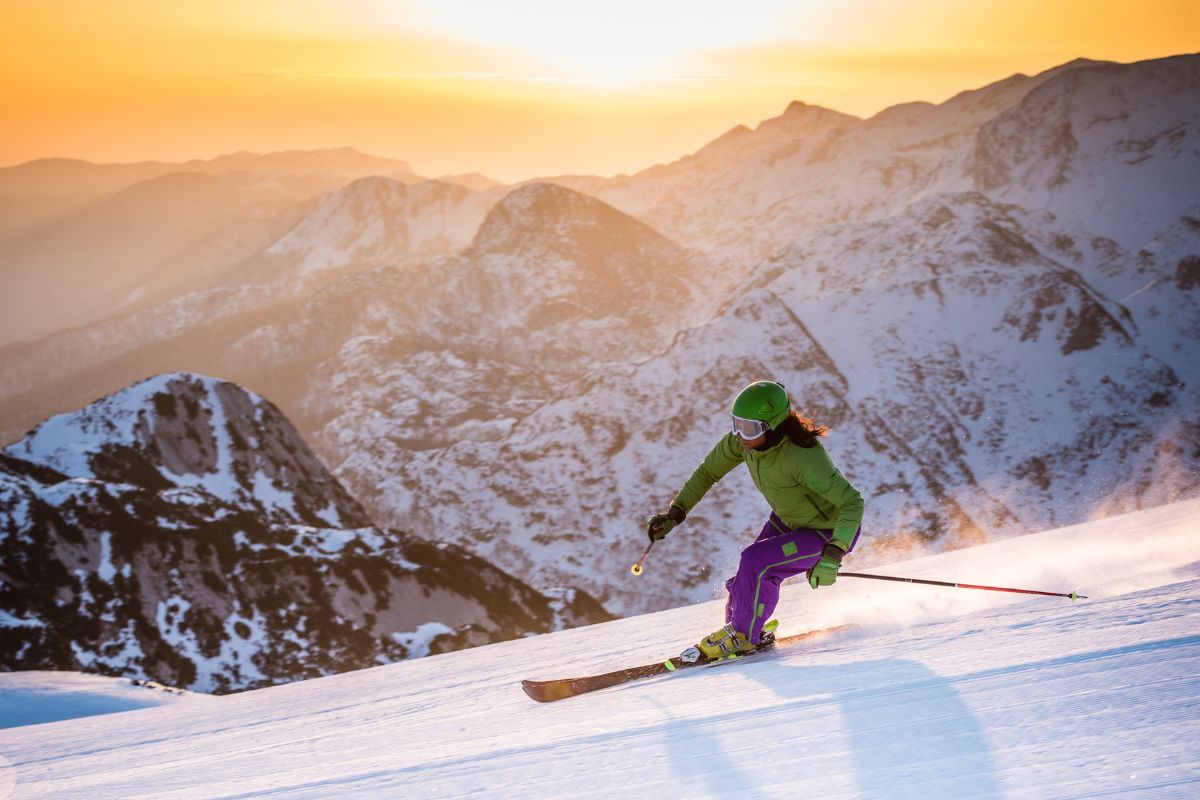My friend called me last month, freaking out about lift ticket prices. She’d just looked at Vail’s website and saw $299 for a single day. “That’s insane,” she said. “I could fly to Europe for that.”
Turns out, she wasn’t wrong. The whole Europe or America for Your Next Ski Trip? The debate has gotten really interesting lately, especially when you start crunching the actual numbers. I’ve skied both sides of the Atlantic, and honestly, the differences go way beyond just the price tag.
The Money Talk Nobody Wants to Have
Let’s get real about costs because that’s what everyone cares about anyway. Right now, a single-day lift ticket at major American resorts averages around $198. But that’s the average. Walk up to the ticket window at Vail or Deer Valley, and you’re looking at $250 to $329, depending on the day. For one day. One.
Meanwhile, over in Europe? Most major resorts charge under $100 for a day pass. Chamonix runs about $93. Austria’s St. Anton is around $81. Even fancy Swiss resorts like Zermatt top out at $98. When comparing skiing in Europe vs. skiing in the US, the price difference is almost comical.
A guy I know who reviews ski resorts for a living spent 20 days skiing across six European resorts this past January. His total cost, including the flight from Newark to Geneva, came to $3,800. That’s everything – lift tickets, food, lodging, the works. Try doing 20 days of skiing in Colorado for under four grand. Good luck with that.
Why the Huge Price Gap?
Here’s the thing most people don’t get. Europe has nearly 4,000 ski resorts crammed into roughly the same land area where America has about 500. That’s a lot more competition, which naturally drives prices down.
In America, a couple of huge companies own most of the big-name resorts. Vail Resorts and Alterra basically run the show at the top-tier mountains. They can charge whatever they want because, well, where else are you gonna go? It’s classic business – less competition means higher prices.
European resorts are more of a mixed bag. Sure, there are some corporate chains, but lots of places are still family-owned or run by local communities. They’ve been doing this for centuries, not decades. Skiing isn’t some trendy sport that showed up in the 1950s – it’s woven into the culture. That changes how they think about pricing.
The Experience Factor
Money aside, the actual skiing experience differs pretty dramatically. American resorts feel purpose-built. Everything’s designed around the ski experience, which sounds great until you realise that also means everything’s designed to extract maximum profit.
You’re paying $18 for a beer in a fake Irish pub blasting Top 40 hits. Lunch runs you $30 for a cafeteria burger that tastes like cardboard. The “village” is basically a strip mall at 9,000 feet with a bunch of chain stores and corporate-owned restaurants.
European ski towns are actual towns where real people live year-round. Kids go to school there. People have jobs that aren’t ski-related. You can grab lunch at a 700-year-old inn and have wine on a sun deck with the Matterhorn staring you in the face. The authenticity factor is off the charts.
I remember eating at this little place in St. Anton last year. Schnitzel, potatoes, and a local beer – the whole deal cost me like 12 euros. The food was legitimately good, not just “good for ski resort food.” Meanwhile, my last meal on the mountain in Breckenridge cost me $45 and tasted like it came from a hospital cafeteria.
The Snow Situation
Americans love to brag about powder, and fair point – Colorado gets amazing snow. The three biggest Colorado resorts average 856 inches per season across 204 snow days. That’s legit.
But here’s what nobody mentions: European resorts ski for nine months out of the year. American resorts get four, maybe five if you’re lucky. Zermatt and Hintertux have glaciers where you can ski pretty much year-round. Les 3 Vallées in France gets less snowfall on average than Colorado, but they make up for it with sheer size and variety.
The 2025-26 forecast is looking solid, too. La Niña conditions are setting up nicely, and the weather nerds say we’re in for a couple of cold snaps later in the season when it really counts.
Getting There and Around
Yeah, flying to Europe costs more than a domestic flight. Can’t argue with that. But the gap’s shrinking fast. Budget carriers like Norse Atlantic and JetBlue keep adding routes, and ticket prices from the East Coast to Europe dropped about 3.5% this year, according to American Express travel data.
Plus, once you’re in Europe, getting between ski towns is stupidly easy. Trains run everywhere. You can ski Italy’s Dolomites one day, hop a train, and be in Austria the next. Try doing that in America, where resorts are spread across different mountain ranges hundreds of miles apart.
American resorts make you drive. Or take expensive shuttle services. Or rent a car and white-knuckle it through mountain passes. It’s a hassle.
The Lesson Situation
Private ski lessons in Europe cost around $70-$128 an hour. In America? Try $80-$150 an hour, and that’s if you can even book one. American resorts only let you take lessons through their own instructors, which means limited availability and higher prices.
Europe has independent instructors everywhere. More competition, better prices, and often better teaching. Makes sense.
Equipment rental follows the same pattern. A week’s rental in Europe runs about $100. In America, you’re paying $25-$100 per day. The math isn’t hard.
Food and Lodging
In Europe, ski lodging accommodates all budgets, from budget hostels to five-star luxury and everything else in between. And they nearly all include breakfast, which is an absolute in terms of budgeting. A nice dinner with wine at a resort restaurant might cost $38-$76 per person.
American resort dining feels like they’re actively trying to gouge you. A family weekend at Vail is easily an $8,000 endeavour when you add up lodging and meals. Meanwhile, families are doing 10 days in the Dolomites for 2,000 euros, all inclusive.
One Swiss hostel I read about offers this seven-night package for around $1,070, which includes dorm lodging, breakfast, and dinner, and sauna access as well as airport transfers from Geneva. Try finding anything remotely like that deal in Colorado.
Season Passes Make It Complicated
If you’re a serious skier who hits the slopes 15-20 days per season, the American season passes like Epic ($1,051) or Ikon make sense. They give you access to resorts worldwide, including some European spots, and the per-day cost works out okay.
But most people don’t ski that much. The average skier hits the mountain maybe 3-5 times a season. For those folks, paying over a grand upfront for a pass doesn’t pencil out, even with the savings.
Europe’s multi-day passes offer better flexibility. Italy’s Dolomiti Superski gives you eight days across 12 interconnected resorts for about $540. That’s under $70 per day with way more terrain variety than you’d get at most single American resorts.
The 2025-26 Tariff Situation
One wrinkle for this season: the U.S. slapped a 15% tariff on European sporting goods back in August. Combined with the weakening dollar, ski equipment prices are up about 25% for American retailers importing from Europe.
That means if you’re buying new skis, boots, or poles this year, expect sticker shock. The good news is it doesn’t directly affect lift tickets or lodging if you’re travelling to Europe. The bad news is your gear upgrade just got way more expensive.
So, Which Should You Pick?
Look, Europe or America for Your Next Ski Trip? It isn’t a simple answer. It depends on what you’re after.
Pick America if you want convenience and you’re already close to the mountains. If you live in Denver and can day-trip to multiple resorts, that changes the equation completely. American resorts also tend to have better facilities – heated gondolas, fancy base lodges, all that stuff.
Pick Europe if you want more bang for your buck and don’t mind the flight. If you’re coming from the East Coast anyway, flying to Europe isn’t that much worse than flying to Colorado. And once you factor in the total costs, Europe wins on price pretty much every time.
The experience matters too. If you want authentic mountain culture, villages with history, and food that doesn’t taste like it came from Sysco, Europe’s got that locked down. If you prefer American convenience and customer service with everything in English, stick with domestic resorts.
My Two Cents
I spent a long time thinking American skiing was the best in the world. Then I skied Europe and realised we’ve been getting fleeced. The mountains are just as good, sometimes better. The snow’s comparable. The experience feels more genuine. And you’re not dropping mortgage-payment money just to access it.
This coming season, I’m heading back to the Alps. Probably Austria, maybe Italy. I’ll ski more days for less money, eat better food, and come home without feeling like I got mugged by a ski corporation.
But hey, if you love your local mountain and have an Epic Pass burning a hole in your pocket, go for it. Just know that there’s a whole other option across the pond that might surprise you. And save you enough money to actually go skiing again next year.






